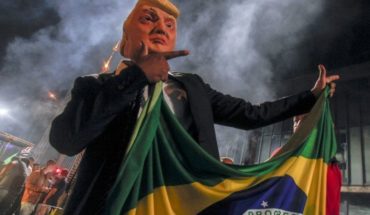Photography/Internet
Cuba.- Thousands of Cubans have taken to the streets since 11 July to demonstrate against the government with the cry of “freedom!” Two days later, despite a restriction on internet access, disinformation about the protests is advancing throughout Latin America.
Here are some of the fake messages that have spread in recent days on social media:
A video that has gone viral on Twitter by showing a crowded square does not correspond to the protests taking place in Cuba, but to Buenos Aires celebrating Argentina’s triumph in the Copa America on Sunday.
The 16-second audio-visual attributed to the demonstrations in Havana has already been viewed more than 200,000 times and shared on some 2,400 occasions on that platform.
The material corresponds, in fact, to the celebrations captured this July 11 in the capital of Argentina after the triumph of his football team in the 15th Copa America.
A reverse search of a keyframe of the material leads to a hundred publications in that same social network accompanied by photographs and videos marked in the Plaza de la República in Buenos Aires.
The images highlight the traditional Obelisk of the City of Buenos Aires, a historical monument considered an icon of the Argentine capital and built in 1936.
A photograph that has become crowded on social media does not show a massive protest on havana’s boardwalk, but thousands of Egyptians marching in 2011 against hosni Mubarak’s regime.
Through posts on Facebook and Twitter, dozens of users have shared the image. The truth is that the photo does not correspond to the protests taking place in Cuba against the government of the island, but to demonstrations in 2011 in Egypt against the dictator Mubarak.
A reverse search of the snapshot leads to press reports containing the same image, including the Californian newspaper Orange County Register.
An article in that medium that covers the 30 years in which Mubarak ruled Egypt with a heavy hand includes in a carousel of 24 images the photograph in question in the fourteenth place.
The graphic file is marked with the caption “thousands of Egyptian anti-government protesters march in Alexandria, Egypt, on Friday, February 11, 2011” and is attributed to the AP Agency.
An image of former Cuban President Raul Castro getting off a plane does not show the political leader fleeing the island after anti-government protests, as claimed on social media. It’s from 2015.
Posts on Facebook and Twitter use that snapshot, in which Castro is seen dressed in a suit and tie, to ensure that the former president fled to Venezuela.
In fact, the image that has gone viral shows Castro arriving in Costa Rica to attend a multilateral summit in 2015.
A reverse search of the photograph leads to a news item on the CubaDebate portal dated January 25, 2015 that contains the same snapshot.
Under the title “Cuban President Raul Castro arrived in Costa Rica for the THIRD CELAC Summit,” the outlet recorded his arrival at that meeting of the Community of Latin American and Caribbean States, which was held between January 28 and 29 of that year.





